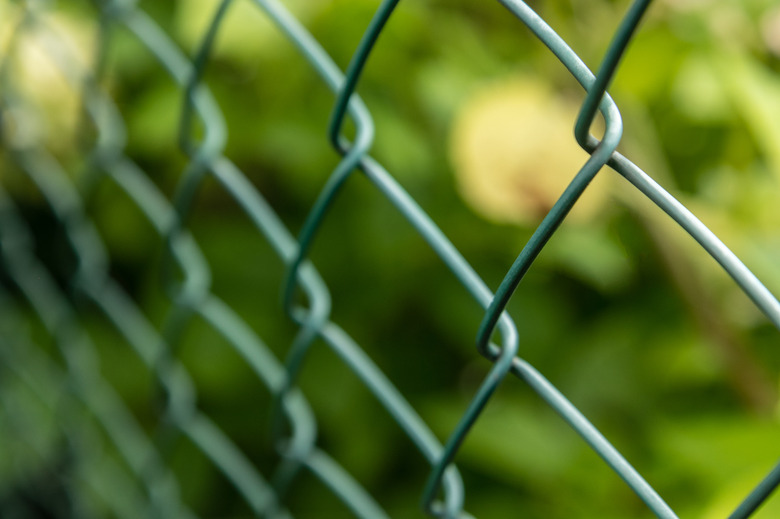How To Install Chain-Link Fencing On A Hill
We may receive a commission on purchases made from links.
Chain link fencing can be tricky to install on a hill. The webbing between the posts is designed for fences installed on a flat surface and creates odd angles at the ends when erected on a graded slope. The secret lies in making a bias cut at the end of the post, which gives the chain link an even appearance.
Things Needed
How to Install Chain-Link Fencing on a Hill
1. Mark the Post Placement
Measure the placement of your posts. Chain link fencing posts should be no more than 10 feet apart, and if you intend to put wooden slats or similar material between them, they should be no more than 6 to 8 feet apart. Place a wooden stake in each location for your posts.
2. Dig Post Holes
Dig holes to plant your fence posts in the spots marked by the stakes. They should be at least 2.5 feet deep, but particulars will vary depending on the type of soil involved. The holes should always be below the frost line in your part of the world
3. Install the Posts
Plant your posts, making sure that they stick out of the ground at the same height. Measure posts on the hill carefully: they should be at an identical height as measured from a right angle to the ground rather than the post's actual height. Otherwise, they will be too short.
4. Backfill the Post Holes
Fill the holes with gravel or concrete and pat them down, checking each time to ensure that the post height is accurate.
5. Install Tension Bands
Place tension bands on the end posts. You should use a number of tension bands equal to the height of the posts in feet, minus 1. For example, a 5-foot-tall post should have four tension bands in place. Space the tension bands about 12 to 18 inches apart.
6. Install Terminal Caps
Place terminal caps on the end posts.
7. Install Line Post Tops
Connect line post tops to the line posts and then attach the line rails, one by one, between posts. This may not be possible with some types of chain link fences, in which case you may need to skip this step and install the webbing directly.
8. Roll Out the Webbing
Unroll the chain link webbing and lay it on the ground beside the posts. Include a little bit of extra material on each end (it can be cut away when you make the bias cut).
9. Attach the Webbing
Walk along the length of webbing, raising it up and attaching it to each post as you go. Start with the terminal post at the top or the bottom of the hill, and pull the webbing taut between the posts before using fence ties to secure it.
10. Cut the Webbing
Make bias cuts in the webbing at the top and the bottom of the hill. As you pull the fence taut, you'll notice that it will extend past the terminal posts at an angle. Insert the tension bar through the webbing parallel to the post. Then cut the diamonds in the fabric directly along the post. That will allow for even spacing, making the fence look nice. Don't cut every wire: you need to make sure they can still be held securely on the terminal posts.
A simple method to help determine where to cut is to simply count the number of weaves that go past the post and the number of vertical diamonds in the webbing. Divide the number of diamonds by the number of weaves. That's the number of wires which must be cut.
Tip
If your chain link fencing includes horizontal areas as well as a hill, it pays to install those areas first. Trying to perform a bias cut with webbing longer than necessary makes things extremely complicated. Treat the sloped fencing as a separate, autonomous piece of construction when you install it.
When making a bias cut, it's best to proceed conservatively until you have some experience at it. Check the webbing for stress points along the terminal rail as you cut, and always make your cuts in the middle of the wire between the angles.
